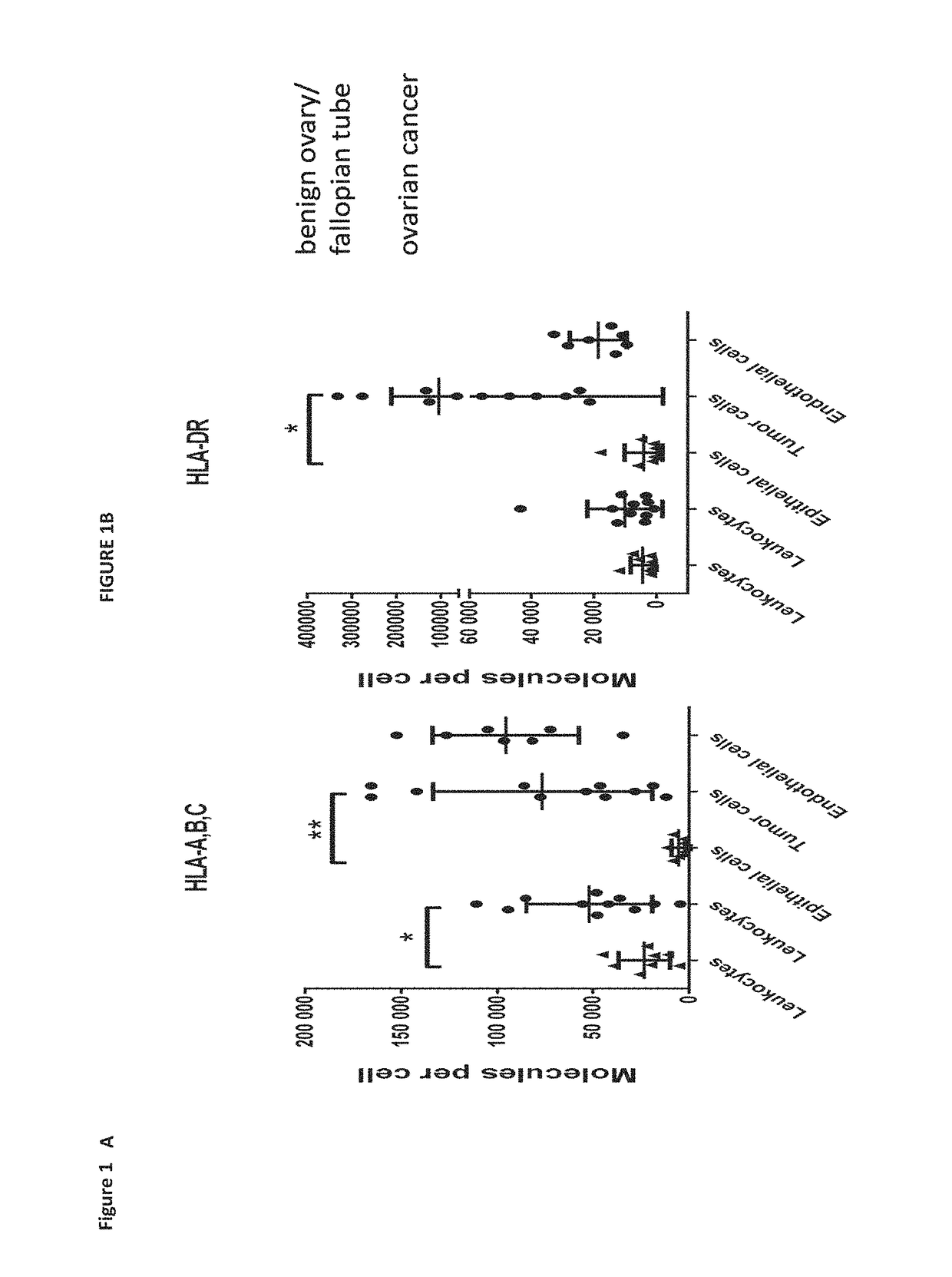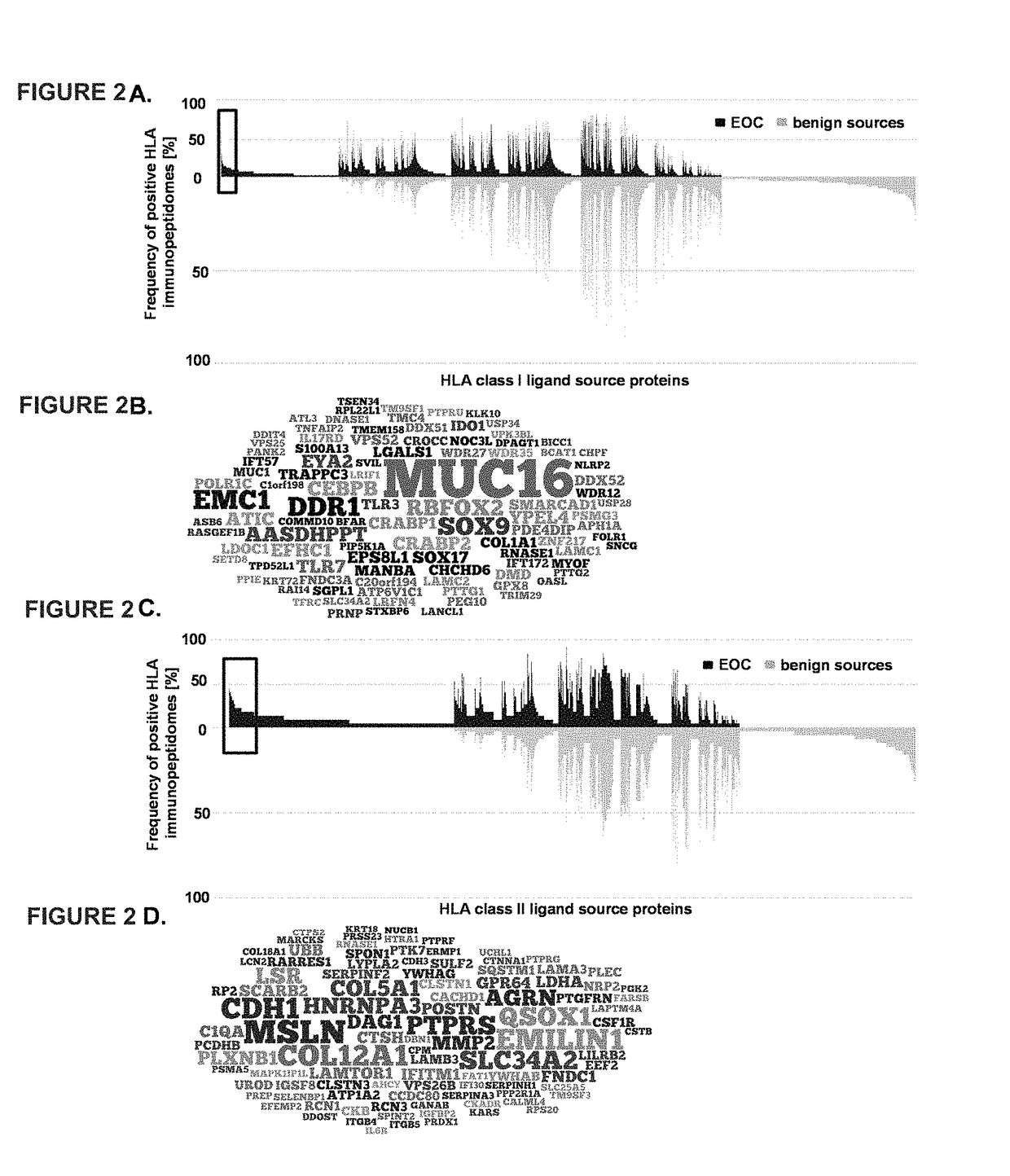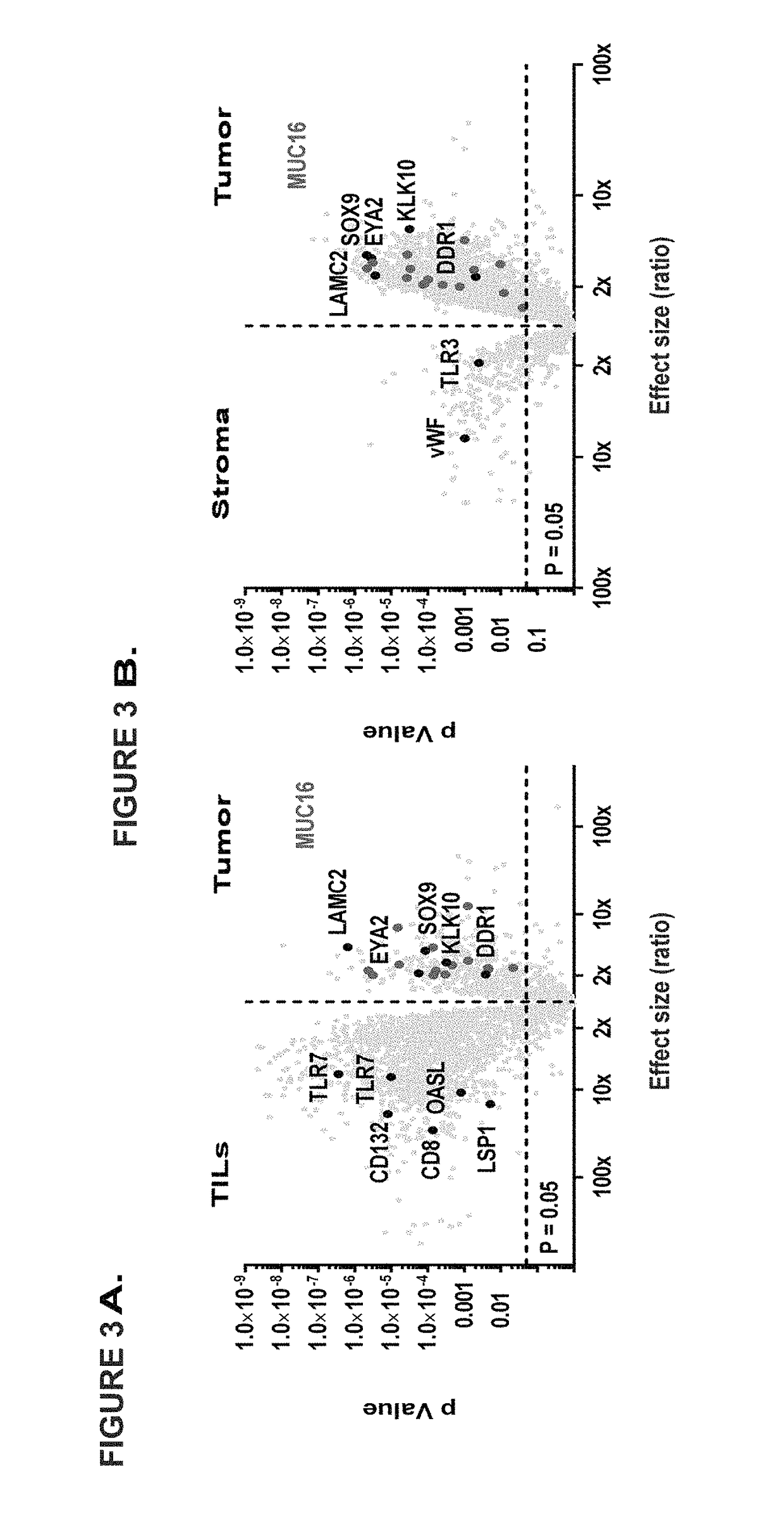Peptides and combination of peptides for use in immunotherapy against epithelial ovarian cancer and other cancers
a technology of epithelial ovarian cancer and immunotherapy, which is applied in the field of immunotherapy of cancer, can solve the problems of not providing precise information as to the use of the antigen being transcribed from these genes, and the possibility of isolating class ii peptides directly from primary tumors, etc., and achieves high error rates
- Summary
- Abstract
- Description
- Claims
- Application Information
AI Technical Summary
Benefits of technology
Problems solved by technology
Method used
Image
Examples
example 1
on Cell Surface and HLA Typing
[0372]A major prerequisite for the development of T-cell mediated immunotherapies is the expression of MHC molecules on the surface of tumor cells. Therefore, the inventors analyzed and quantified the number of HLA-A, B, C as well as HLA-DR molecules by flow cytometry on different cell subsets of ovarian tumors (n=11) as well as benign tissues from ovary and fallopian tube (n=8) obtained by enzymatic dissociation. The analysis aimed at the separate quantification of cell type specific HLA expression for leukocytes (CD45+), tumor / epithelial cells (Epcam+), and endothelial cells (CD31+; the latter only in a subset of 7 ovarian tumors). For the complete gating strategy see FIG. 6. The median number of HLA molecules per cell was heterogeneous both among different cell types and individual patients, ranging from ˜5,000 to 150,000 HLA class I and ˜500 to 330,000 HLA-DR molecules. The number of HLA-A, B, and C molecules was significantly higher (p=0.0205) on l...
example 2
, Identification of Top Cancer Associated HLA Ligands
[0376]Aiming to extract the most specific HLA ligands for EOC from this vast catalogue of data the inventors compared the HLA ligand source proteins with an in-house database of benign sources (“HLA benign ligandome database”) consisting of samples from PBMCs (n=30), bone marrow (n=10), liver (n=15), colon (n=12), ovary (n=4) and kidney (n=16).
[0377]The HLA benign ligandome database contains 31,032 peptides representing 10,012 source proteins and was established using blood or bone marrow from healthy donors as well as histopathologically evaluated normal tissues, all analyzed with exactly the same pipeline as used for EOCs. For comparative profiling “one hit wonders” (i.e. peptides only presented on one source with low PSM count) were removed from both datasets to accommodate for false positive hits. Comparative analysis of the two respective datasets (see FIG. 2A) revealed 379 MHC class I source proteins to be presented exclusiv...
example 3
Origin of EOC Associated HLA Presented Peptides
[0382]Since EOCs embody not only cancer cells but rather represent a heterogeneous mixture of different cell types the inventors asked, whether the MHC class I TOP100 antigens were indeed originally presented by cancer cells. For this purpose the inventors digested EOCs and separated CD45+ leukocytes, EpCam+ tumor cells as well as stroma cells negative for the two markers (for enrichment efficiencies see Table 10) and subsequently the inventors performed HLA ligandomics individually for each of the subsets.
[0383]
TABLE 10Cell enrichment efficiencies:Percentage of cells are given in each fraction before (PreSort) and after MACSortingPreSortCD45+ fractionEpCam+ fractionEpCam− fractionOVCaCD45+EpCam+ViabilityCD45+EpCam+ViabilityCD45+EpCam+ViabilityCD45+EpCam+Viability8474.718.380.293.56.271.610.785.788.24.522.164.07323.112.381.295.71.777.23.473.387.61.73.287.47076.28.8378.9961.382.73.49466.43.14.565.46077.45.292.394.81.790.25.279.788.73.810...
PUM
| Property | Measurement | Unit |
|---|---|---|
| concentration | aaaaa | aaaaa |
| concentration | aaaaa | aaaaa |
| particle size | aaaaa | aaaaa |
Abstract
Description
Claims
Application Information
 Login to View More
Login to View More - R&D
- Intellectual Property
- Life Sciences
- Materials
- Tech Scout
- Unparalleled Data Quality
- Higher Quality Content
- 60% Fewer Hallucinations
Browse by: Latest US Patents, China's latest patents, Technical Efficacy Thesaurus, Application Domain, Technology Topic, Popular Technical Reports.
© 2025 PatSnap. All rights reserved.Legal|Privacy policy|Modern Slavery Act Transparency Statement|Sitemap|About US| Contact US: help@patsnap.com



